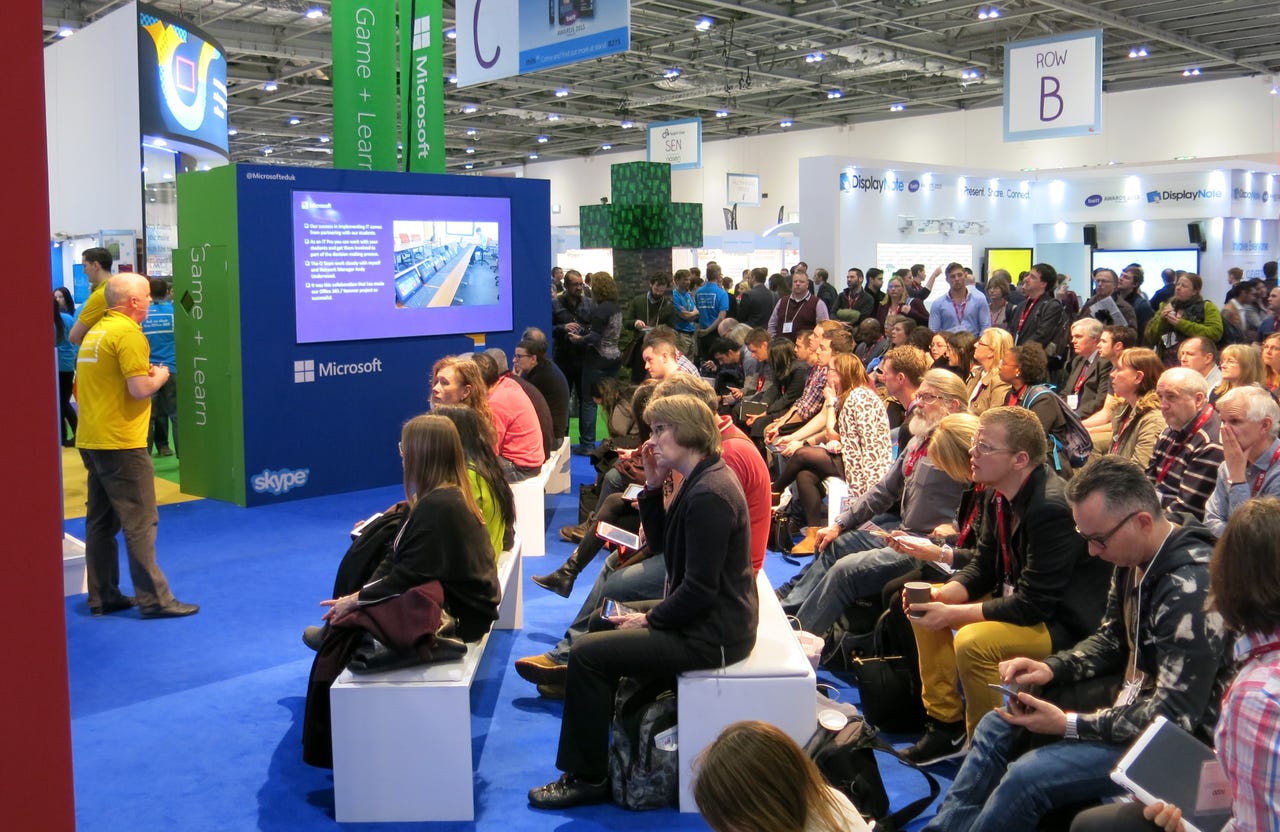PC and tech suppliers show their stuff at the UK's big BETT2015


The educational technology market is obviously not the same as the consumer and business markets, though there are overlaps. Judging by what was on the stands, and chatting to exhibitors, Microsoft Windows 8.1 is finding favour in British schools, with 2-in-1 laptops being particularly popular for providing both laptop and tablet functionality. (This says nothing about what schools are actually using today.) There was also interest in Chromebooks, though these are growing from a very low base.
It was impossible to guess how well Google Android and Apple iPad tablets are doing. There were certainly lots of Android tablets on the various PC manufacturer's stands, but maybe there were more cases and gadgets for iPads. These included the interesting Osmo, which allows for new input methods.
Either way, LearnPad was the most prominent tablet supplier, with a dedicated education-oriented system that rarely mentions which operating system it uses. However, it does run Adobe Flash, which is required by much if not most education software. This is one key area where both Microsoft Windows and Android have the edge on iPads; another is price.
LearnPad's tablets ship with a child-friendly interface, a collection of educational software, and a management system that enables teachers to view and control (load, pause, lock down etc) a classroom full of tablets. The company also offers a range of devices from the cheap and cheerful £99 Decimo, with its 6-inch screen, to the £399 21.5-inch Folio 2 "desktop tablet", both launched at the show. The Folio 2 is a 10-point touch tablet designed for collaborative work, and comes with a keyboard and mouse.
LearnPad was a finalist in five different categories of the BETT Awards, and won one: ICT Exporter of the Year. The company seems to have done remarkably well in a very short time. It was almost unknown at BETT2012 at Olympia, when I picked out the first LearnPad Android tablet from "Cardiff-based Avantis" (BETT 2012: Educational computing takes a stand).
Lots of PC suppliers had large stands. Microsoft dominated the centre of the hall, with a series of popular lectures, a focus on Office 365 and educational cloud computing, and a small Minecraft exhibit. Others major exhibitors included Acer, Dell, Fujitsu, HP, Intel, Lenovo, Samsung and Toshiba, as well as two more local suppliers to UK education, RM and Viglen.
Acer led with its attractive Click range of convertible, 2-in-1 laptops in small-ish screen sizes, but it also launched two Chromebooks with "enhanced durability" - reinforced covers and hinges. The C740 has a normal 11.6-inch screen while the C910 is a bit of a monster with a 15.6-inch display. Acer also showed the Aspire R13 with a rotating screen, and produced a great Vine stream showing different BETT2015 people and products including Sir Ken Robinson, who gave a talk and a book-signing.
On the Fujitsu stand, the not-new Stylistic Q584 Windows tablet attracted my attention when the demonstrator dropped it in a tank of water: it's not just rugged but dustproof and waterproof. The Q584's attachable keyboard is also novel in that the back slides out to provide extra stability. But this device is expensive for education, and more of a corporate product.
Toshiba also unveiled the enterprise-oriented Portégé Z20T-B, a 2-in-1 Windows 8.1 Ultrabook with a Broadwell Core-M processor. The Z20T-B has a 12.5-inch 1,920 x 1,080-pixel touch screen with a digitizer option, and the keyboard battery extends the battery life from 9 hours to 17.5 hours. That's two working days, if not more, which is good for a thin (21mm) and light (1.51kg) laptop.
With programming now becoming a compulsory subject in UK schools, it was also interesting to see the Fuze, a programmable computer powered by a Raspberry Pi. It (intentionally) brings back memories of the Acorn BBC Micro that was supposed to teach the UK programming in the early 1980s, and which became the standard computer in schools. Today, its main legacy is the Acorn-designed ARM processor used in most smartphones.
The Fuze comes with Basic, Python and Scratch for teaching programming, plus Minecraft and some free games. The add-ons include a Robot Arm kit, solder-less breadboards for electronics projects, and various Project Cards. Most kids nowadays see nothing but sealed boxes. The Fuze is the entry point to a world of analog and digital sensors and switches that was pretty much abandoned during the mass consumerization of IT. Every school should have at least one.